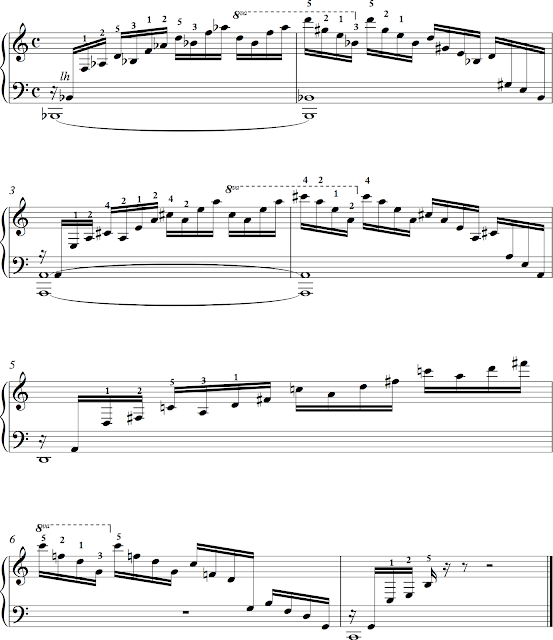 |
| F. Chopin |
Chopin's études are not studies in the above-referenced sense. They are instead concert pieces designed to showcase skill; they are not a pedagogical canon. It goes without saying, of course, that any technical issue in a piece of music is a learning experience, a study, if you like. So this begs the question, when I play a concert piece called étude, am I supposed think of it as a stepping stone to some other piece that I may or may not play later on? Am I to follow the fingerings imposed by the editor—even those offered by the composer, who has a very different skill set? I'm glad you asked. The answer is no.
This reminds me of a passage I once read in an essay by the distinguished
 |
| Sir Donald Francis Tovey |
The sound of Chopin's Étude Op. 10, No. 1, is that of cascading arpeggios. The difficulty, if there is one, is that the cascades cover wide open spaces, encompassing a tenth or more at the outer edges. Standard triad fingerings are not always possible for the average hand, as these fingerings often feel like awkward stretches. The over-all technical approach to this concert piece has to do with an understanding of shaping and grouping. But some judicious re-fingering can make all of the difference.
Here are some of my favorites:
 |
| Chopin Étude Op. 10, No. 1 MM 33-39 |
Many more similar opportunities for expeditious fingering exist. Look for them. This is not cheating.

1 comment:
Thank you very much! It actually never crossed my mind to rework the fingerings in this particular piece, though I do it all the time in other non-etude pieces... Especially the section you highlighted is a torture at speed.
Post a Comment